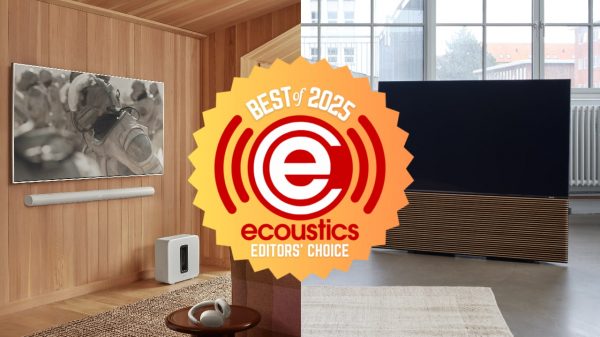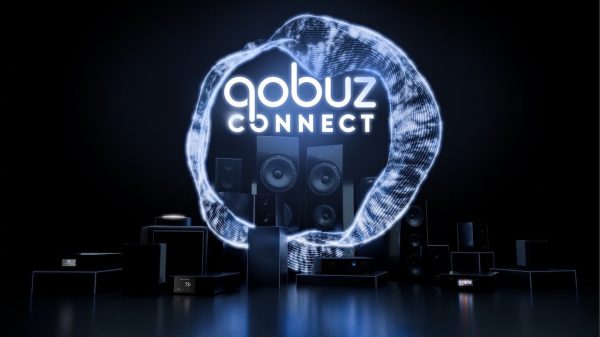Fraunhofer Institute for Integrated Circuits (Fraunhofer IIS), a leading developer of advanced audio technologies, including mp3 and AAC, introduced upHear Flexible Rendering at CES 2025. Unfortunately we didn’t get a chance to hear it, but from what we know so far it appears to be an alternative to Dolby Flex Connect which can create a more immersive listening experience no matter where (or how many) speakers are placed in a room.
upHear Flexible Rendering
upHear Flexible Rendering is part of Fraunhofer’s upHear range of audio processing technologies. The technologies enhance the sound quality of content from voice signals to immersive audio content and provide precise audio pickup as well as faithful reproduction from classic stereo setups to complex scenarios with multiple devices. upHear Flexible Rendering automatically combines wireless speakers in a setup for the best possible result. This technology supports new immersive audio formats as well as optimal upmixing for legacy content.

Speaker Repositioning
upHear Flexible Rendering makes it possible to add/remove speakers and to reposition them. The upHear algorithm optimizes the sound image based on the current setup. The wireless speaker setup also uses the Fraunhofer Communication Codec LC3plus for ultra-low-latency wireless audio transmission.
From Sebastian Meyer, Product Manager upHear, Fraunhofer IIS: “Currently, users can only connect to one smart speaker at a time or to a fixed setup per room. With the upHear technology, you now have the flexibility to conveniently combine any number of speakers into an immersive speaker cluster wherever you want. Party music in the kitchen? Transform your living room into a movie theatre. Operas in the bathroom? It is all possible without a fuss,”
upHear Microphone Processing Technologies

upHear Microphone Processing can make live calls more intelligible with AI-based Echo Control, Noise Reduction, and Voice Isolation. Users can also create a “fingerprint” of their voice, which makes it possible to remove all sounds but their voice from a call for a truly personalized live call experience for better conferencing.
upHear audio demos: https://comm-demos.iis.fraunhofer.de/upHear_20240808/index.html
upHear Mobile Audio

With upHear Mobile Audio listeners can experience virtualized spatial audio enhancements during playback over headphones. It works from multiple sources, from legacy stereo to current immersive formats. Thanks to the minimum resource requirements of the low-complexity rendering, upHear’s processing can run on headphones, mobile devices, home audio systems, or even low-power XR devices.
upHear is available immediately for use in consumer audio products. For more information www.uphear.com,
More From Fraunhofer: Audio Codecs
xHE-AAC: This stereo codec is designed for broadcast and streaming. Features of this codec include DASH/HLS streaming at 12-320+ kbit/s, a new anchor loudness feature, mandatory loudness, dynamic range control, improved speech quality, and stereo imaging. xHE-AAC is currently used by Netflix, Facebook stories, and Instagram Reels. xHE-AAC is also supported on the latest Amazon, Android, Microsoft, and Apple products and operating systems.
LC3plus Lossless: Video calls, music, and gaming are best enjoyed with wireless headphones and microphones that deliver perfect audio quality and long battery life. With LC3plus, high-quality sound reaches users. LC3plus Lossless switches seamlessly between lossless and lossy modes of operation.
It also features low delay and superior robustness thanks to Advanced Packet Loss Concealment. LC3plus is on the Japan Audio Society’s list of codecs whose implementation opens the door for device manufacturers to use the prestigious High-Res Audio Wireless logo. Fraunhofer IIS is integrated into the AKG N5 Hybrid Earbuds, a HyperX gaming headset, a Sony streaming microphone, and a headphone prototype by BEStechnic.
MPEG-H Audio: This codec is the core of a next-generation audio system for streaming and broadcast applications with advanced personalization and accessibility options. With MPEG-H viewers can choose between different languages and commentators or select a version with enhanced dialogue.
MPEG-H is used in devices globally. One example is that it is required for Brazil’s upcoming DTV+ broadcast standard. Within that standard major providers Globo, TV Cultura, and others are able to deliver customizable immersive sound with a high degree of accessibility.

The Bottom Line
Fraunhofer is one of those companies that exerts its influence behind the scenes but plays a major part in what consumer audio products can do. As the developer of MP3 and AAC, they paved the way for how many of us initially experienced listening to downloads and streamed digital music.
They have continued with their innovation strategy with upHear which is being made available to product makers for refining the immersive audio listening experience as well as providing support for better quality and more flexible mobile phone calling.
Innovation is great but does the market need more formats and codecs? The industry has struggled for years to convince consumers about the validity and value of lossless and hi-res codecs and this just adds another one to the pile.
Having not experienced it yet, we can’t tell you how it performs with any of the hardware that you might be familiar with. Expect a follow-up in the near future when we can run this through some tests.
Related Reading



































